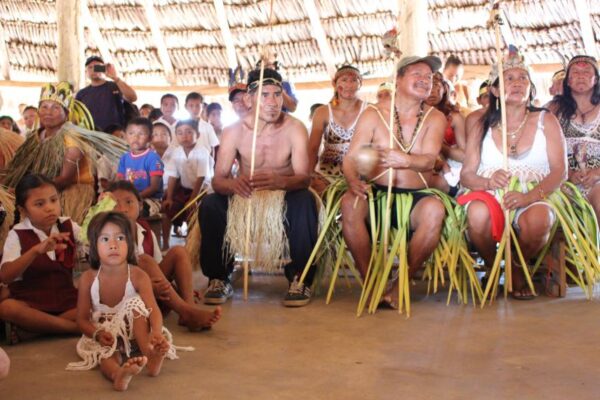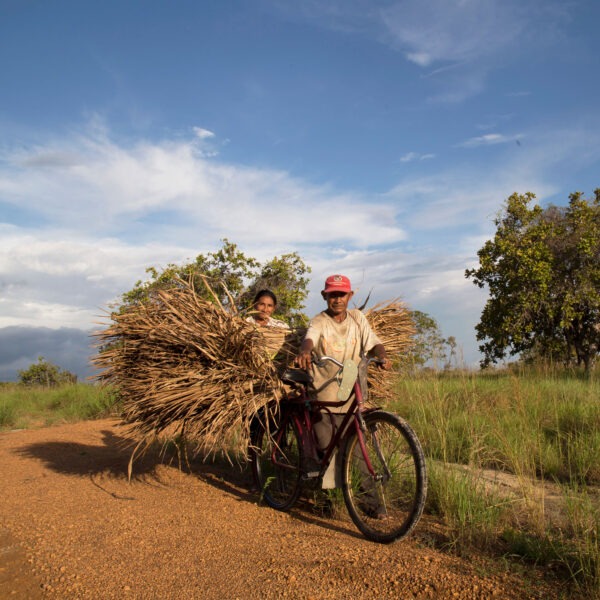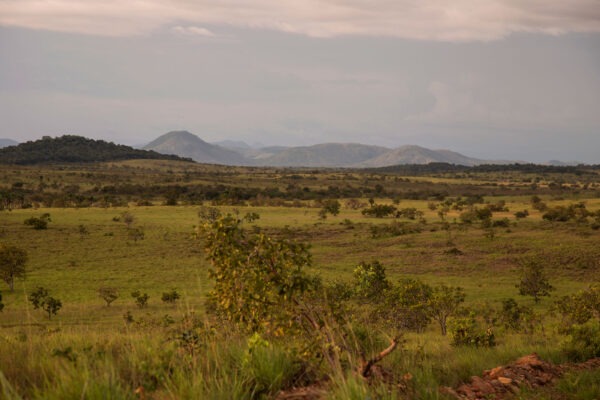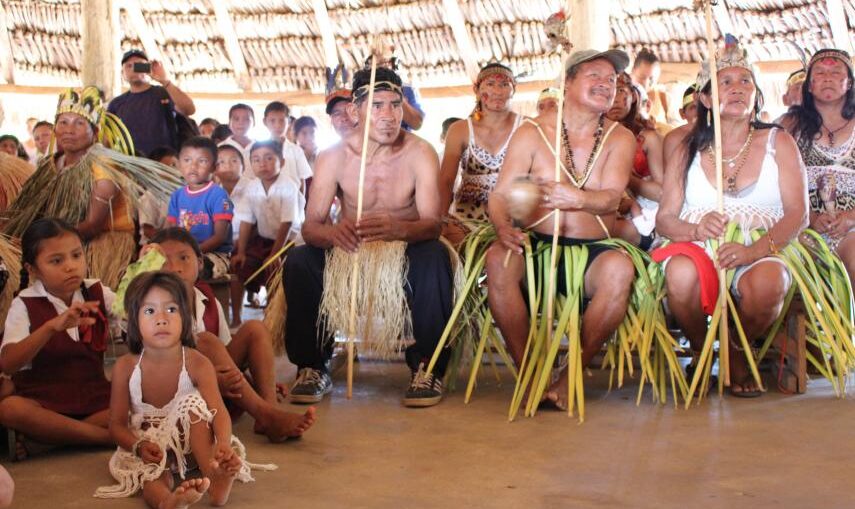Nestled in the southern part of Guyana lies the ancestral lands of the Wapichan people, known as Wapichan Wiizi.

The Wapichan people [Photo: Forest Peoples Programme]
The Wapichan people have inhabited and nurtured this land for generations, embodying a deep spiritual connection and respect for their environment.
TRADITIONS WHICH HAVE PASSED DOWN
Furthermore, their traditions passed down through the ages, emphasise the importance of caring for the land. It is a value that remains central to their way of life today.
Besides, the journey for recognition of their territory began in the 19th century, with partial recognition achieved in the 1930s. However, it wasn’t until 1967 that a formal request for legal title to all their lands was presented to the Amerindian Lands Commission.
Despite some progress with additional land titles in 1991, the full extent of their territory remained unrecognised.
MAPPING OF THEIR TRADITIONAL LAND
In 2000, the Wapichan people embarked on a monumental task to map their traditional land use and occupation. Utilising their own mappers and drawing on the knowledge of their communities, this effort was a testament to their determination to secure their lands.

The Wapichan people [Photo: https://tierra.fimi-iiwf.org/]
This was followed by a comprehensive community-based research project in 2005-06, documenting their traditional practices and land management techniques.
The culmination of these efforts led to the development of an outline plan for caring for their territory, agreed upon by the District Toshaos Councils in December 2007.
COMMITMENT TO SUSTAINABLE DEVELOPMENT
This plan was a response to a request by the President of Guyana in 2004, demonstrating the Wapichan people’s commitment to sustainable development.
Despite their efforts, external developments such as mining, logging, and road construction continue encroaching upon their lands. This has only strengthened the resolve of the Wapichan people to secure their territory and implement their plan for the benefit of future generations, Guyana, and the world.

The sunset over the vast savannah in the South Rupununi [Photo: https://tierra.fimi-iiwf.org/]
The Wapichan people call upon the government, international agencies, and allies to support their efforts. They seek recognition of their rights and assistance in advancing their plan. Together, they hope to realize the vision of the Wapichan people for Wapichan wiizi.
EXPERIENCE THE CULTURE OF THE WAPICHAN PEOPLE
Visitors to the South Rupununi region can experience the rich culture of the Wapichan people through local crafts and cultural activities. Each village offers a unique glimpse into the Wapichan traditions and way of life. Here are a list of some of the villages:
- Parikowaro Naawa Village (Parikwarinau): Named after the grassland sparrow, this village is steeped in spiritual significance. Visitors can learn about the legends and beliefs that shape the community’s relationship with the land.
- Potarinao Village: This village’s name derives from a giant stingray once inhabited a deep pool in the Sawariwau River. Today, visitors can explore the village’s history and connection to the natural world.
- Baitoon Settlement: Meaning “Muscovy ducks island,” this village offers a glimpse into the abundance of wildlife that once thrived in the area. Visitors can learn about the village’s history and importance to the Wapichan people.
- Katu ur Settlement: Known as “sand creek,” this community blends Wapichan and Portuguese cultures. Visitors can immerse themselves in the unique traditions and languages of the residents.
- Shizizi Village: Named after the wild pine that grows in the area, this village offers a tranquil retreat amid nature. Visitors can explore the surrounding wilderness and learn about the village’s history.
- Shulinab Village: Named after a palm tree called Shaorai, this village is located between the Sawariwao River and Sawarab Creek. Visitors can explore the village’s surroundings and learn about its cultural significance.
- Katoonarib Village: This village means “many bush islands,” and it was once a satellite of Sawariwao. Visitors can learn about its history and its role in the region.
SUPPORTING THE WAPICHAN PEOPLE
By visiting the villages of the Wapichan people, travellers can support the community’s efforts to preserve their culture and way of life. Purchasing local crafts and learning about their traditions helps to sustain their heritage for future generations. Additionally, supporting initiatives that seek to secure their land rights and protect their environment ensures that the Wapichan people can continue to thrive in harmony with their surroundings.
Article Reference
- http://wapichanao.communitylands.org/index.html
- https://tierra.fimi-iiwf.org/en/indigenous-people-wapichan.html
- https://en.wikipedia.org/wiki/Wapishana
- https://www.forestpeoples.org/en/node/50355







